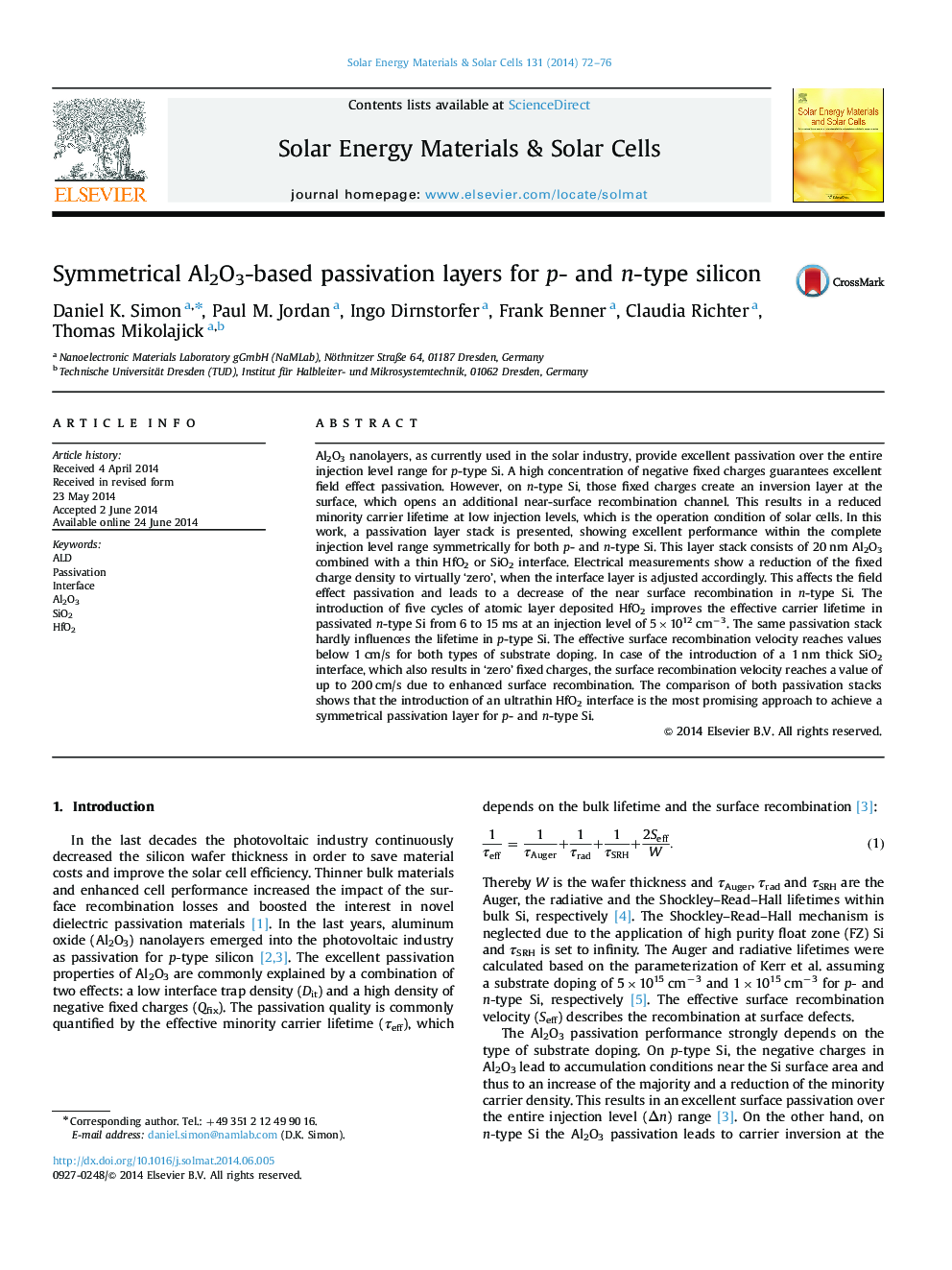| Article ID | Journal | Published Year | Pages | File Type |
|---|---|---|---|---|
| 77951 | Solar Energy Materials and Solar Cells | 2014 | 5 Pages |
•Symmetrical passivation layers are presented for p- and n-type Si.•ALD Al2O3 passivation layers are combined with an ultrathin HfO2 or SiO2 interface.•Applied interfaces reduce field effect and maintain chemical passivation.•High lifetimes found on p- and n-type Si independent from the injection level.•HfO2 interfaces are superior to SiO2 interfaces.
Al2O3 nanolayers, as currently used in the solar industry, provide excellent passivation over the entire injection level range for p-type Si. A high concentration of negative fixed charges guarantees excellent field effect passivation. However, on n-type Si, those fixed charges create an inversion layer at the surface, which opens an additional near-surface recombination channel. This results in a reduced minority carrier lifetime at low injection levels, which is the operation condition of solar cells. In this work, a passivation layer stack is presented, showing excellent performance within the complete injection level range symmetrically for both p- and n-type Si. This layer stack consists of 20 nm Al2O3 combined with a thin HfO2 or SiO2 interface. Electrical measurements show a reduction of the fixed charge density to virtually ‘zero’, when the interface layer is adjusted accordingly. This affects the field effect passivation and leads to a decrease of the near surface recombination in n-type Si. The introduction of five cycles of atomic layer deposited HfO2 improves the effective carrier lifetime in passivated n-type Si from 6 to 15 ms at an injection level of 5×1012 cm−3. The same passivation stack hardly influences the lifetime in p-type Si. The effective surface recombination velocity reaches values below 1 cm/s for both types of substrate doping. In case of the introduction of a 1 nm thick SiO2 interface, which also results in ‘zero’ fixed charges, the surface recombination velocity reaches a value of up to 200 cm/s due to enhanced surface recombination. The comparison of both passivation stacks shows that the introduction of an ultrathin HfO2 interface is the most promising approach to achieve a symmetrical passivation layer for p- and n-type Si.
